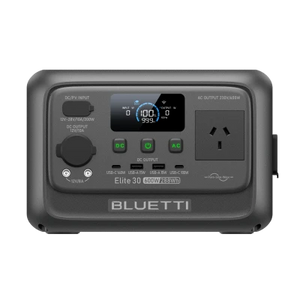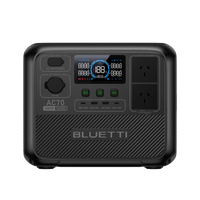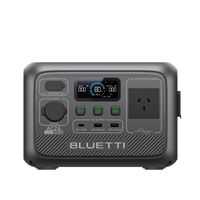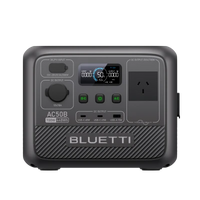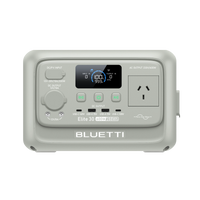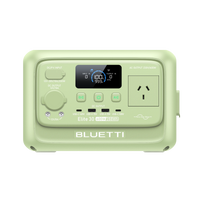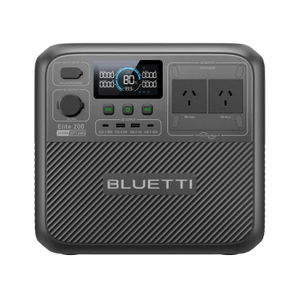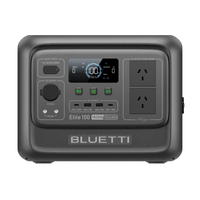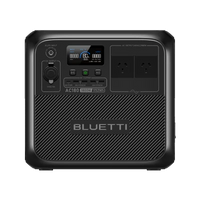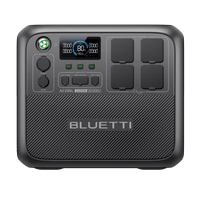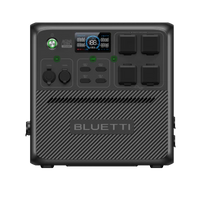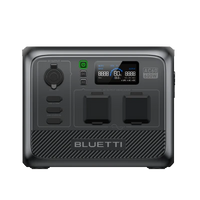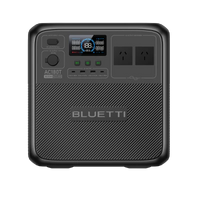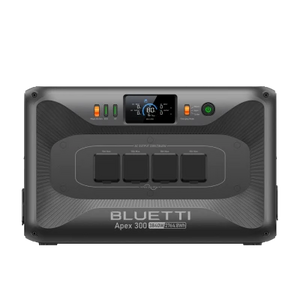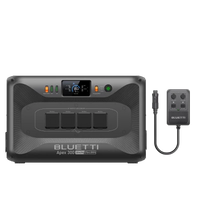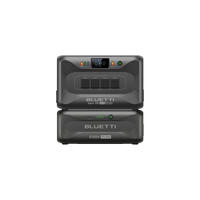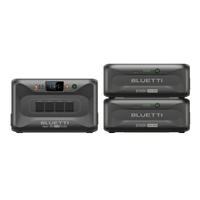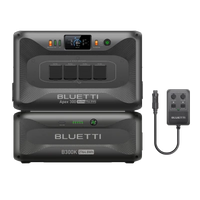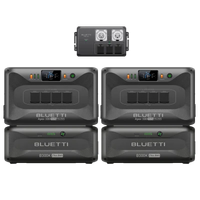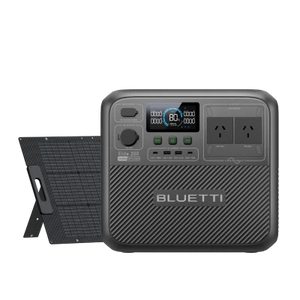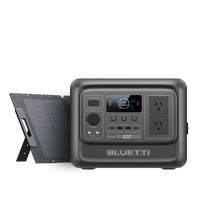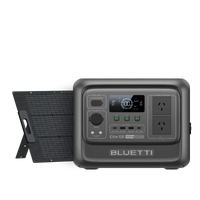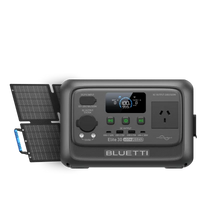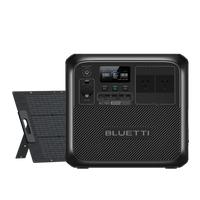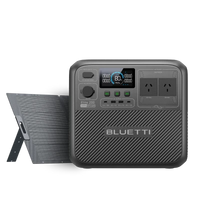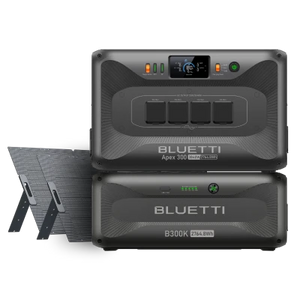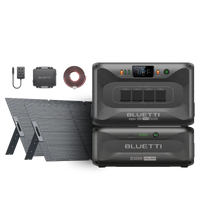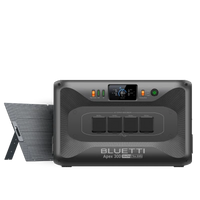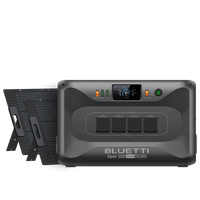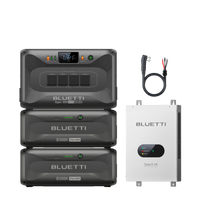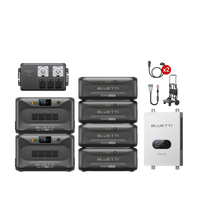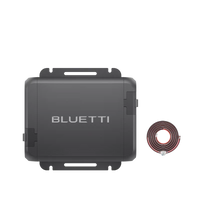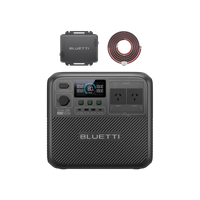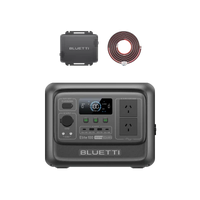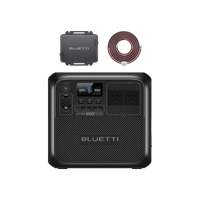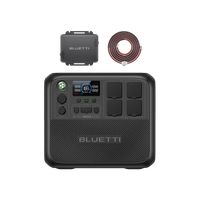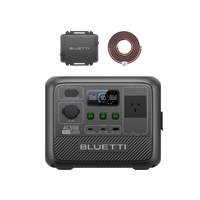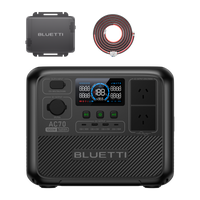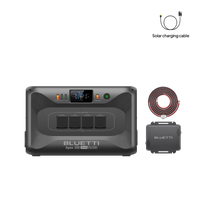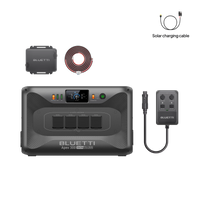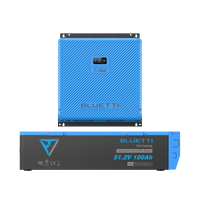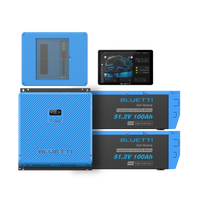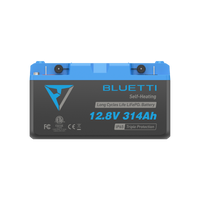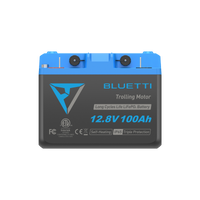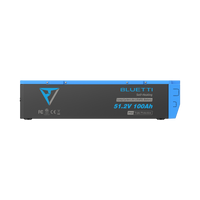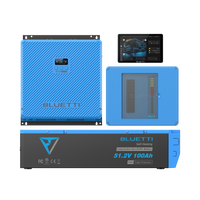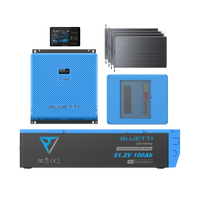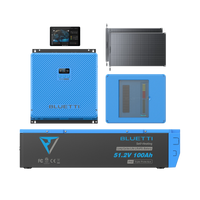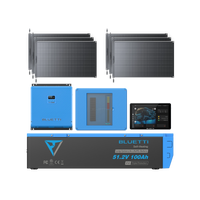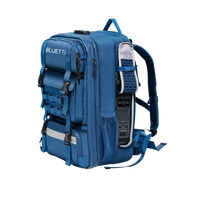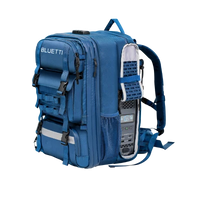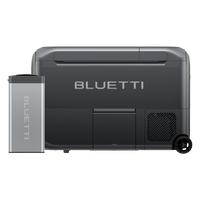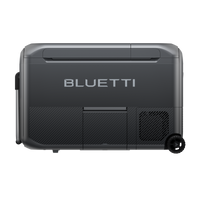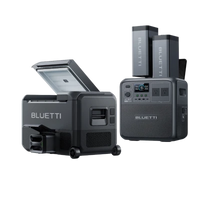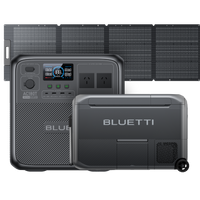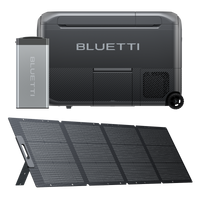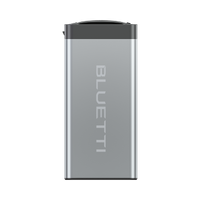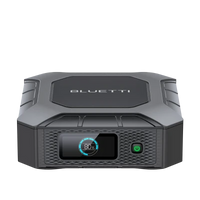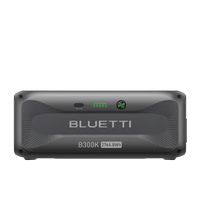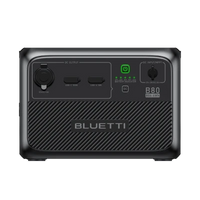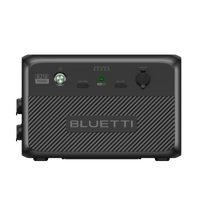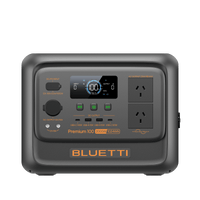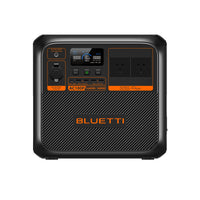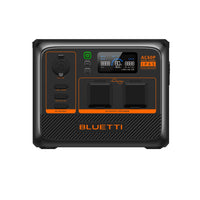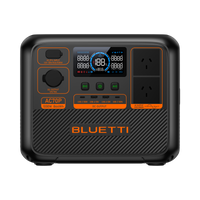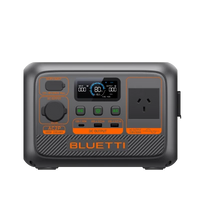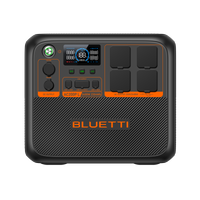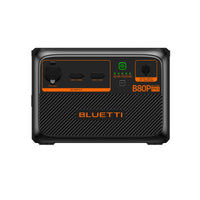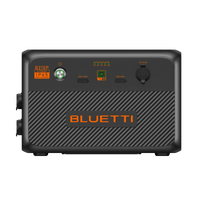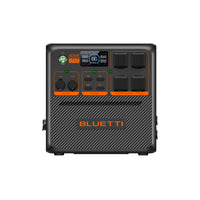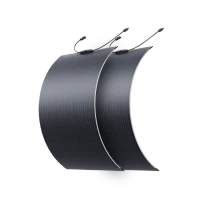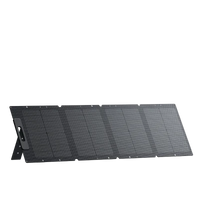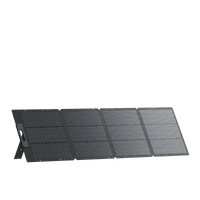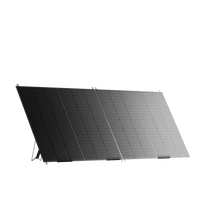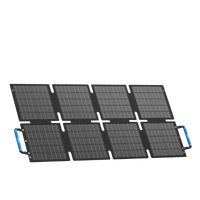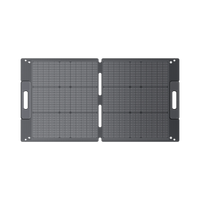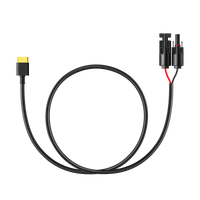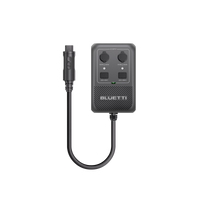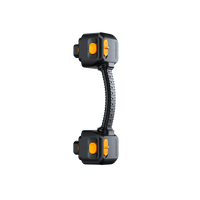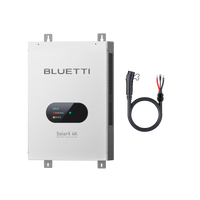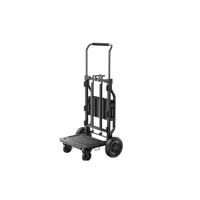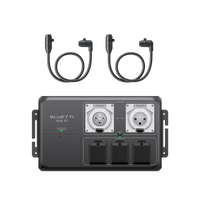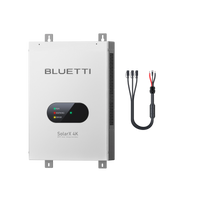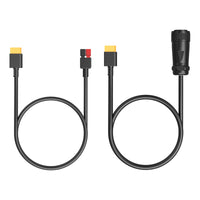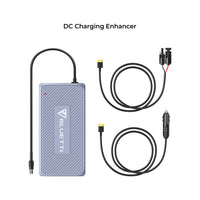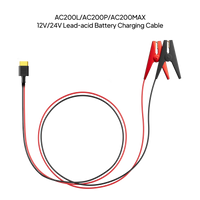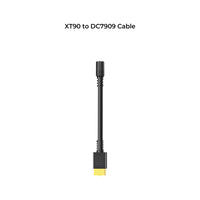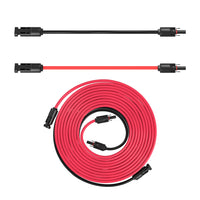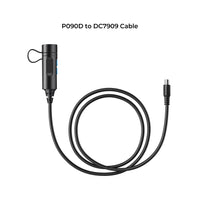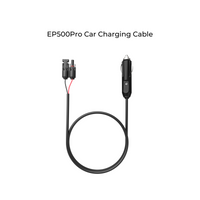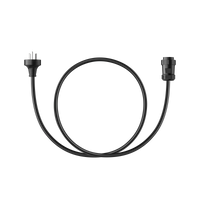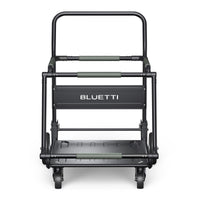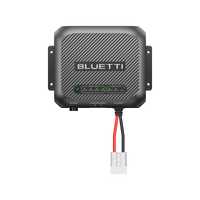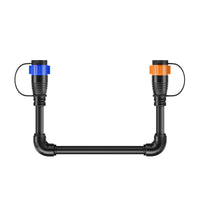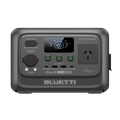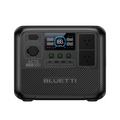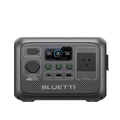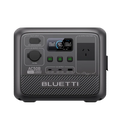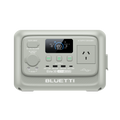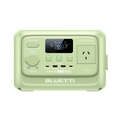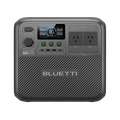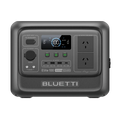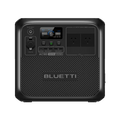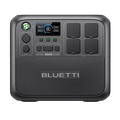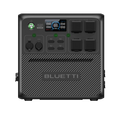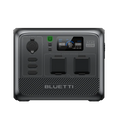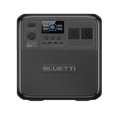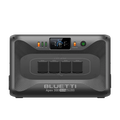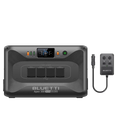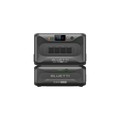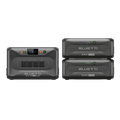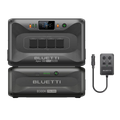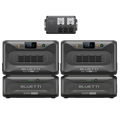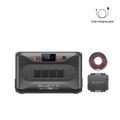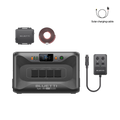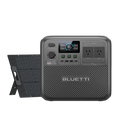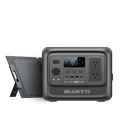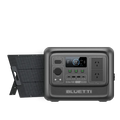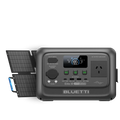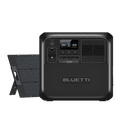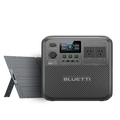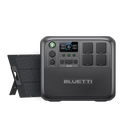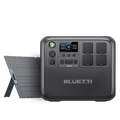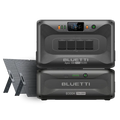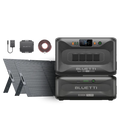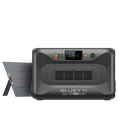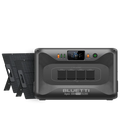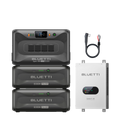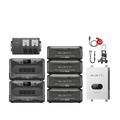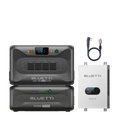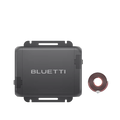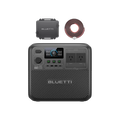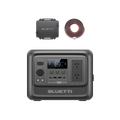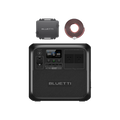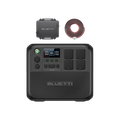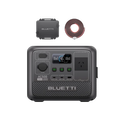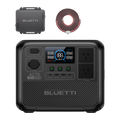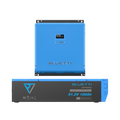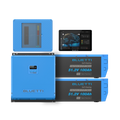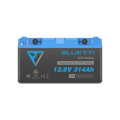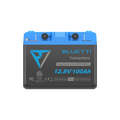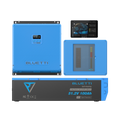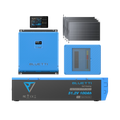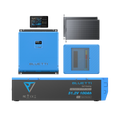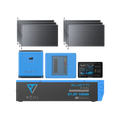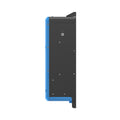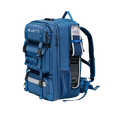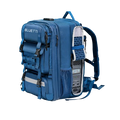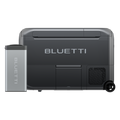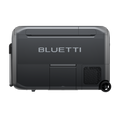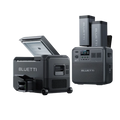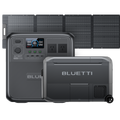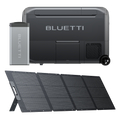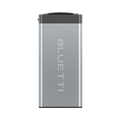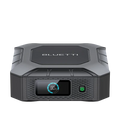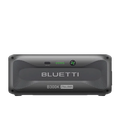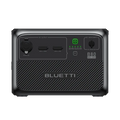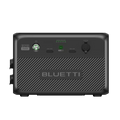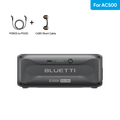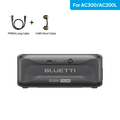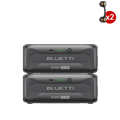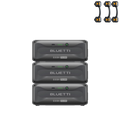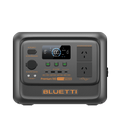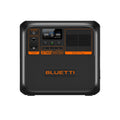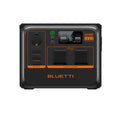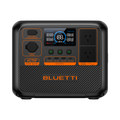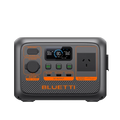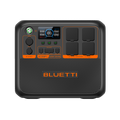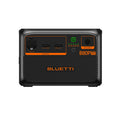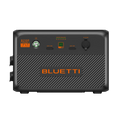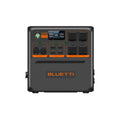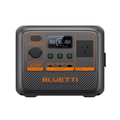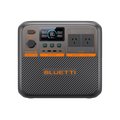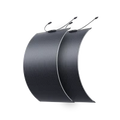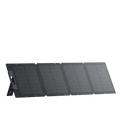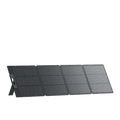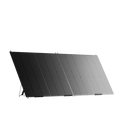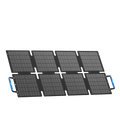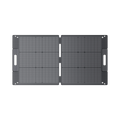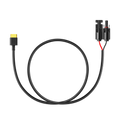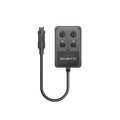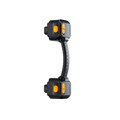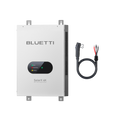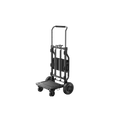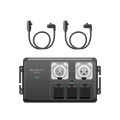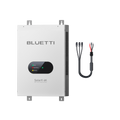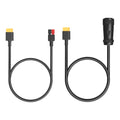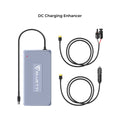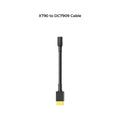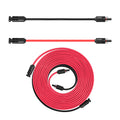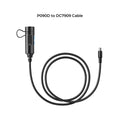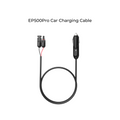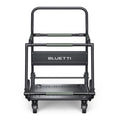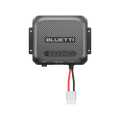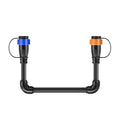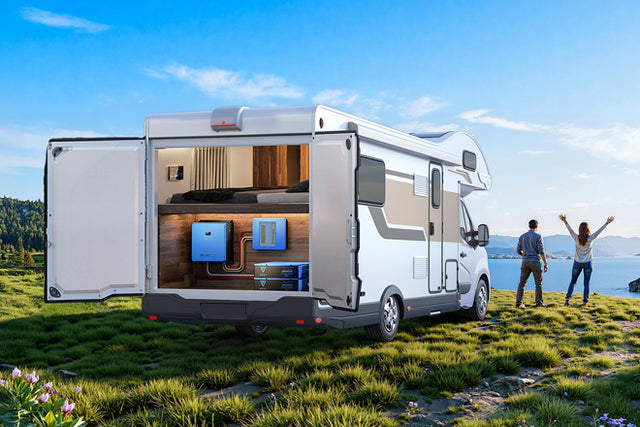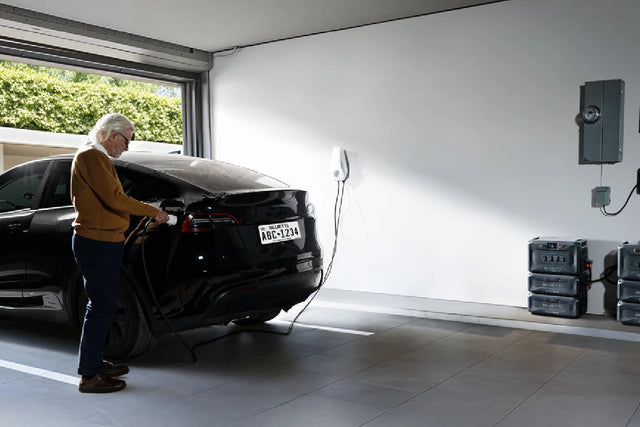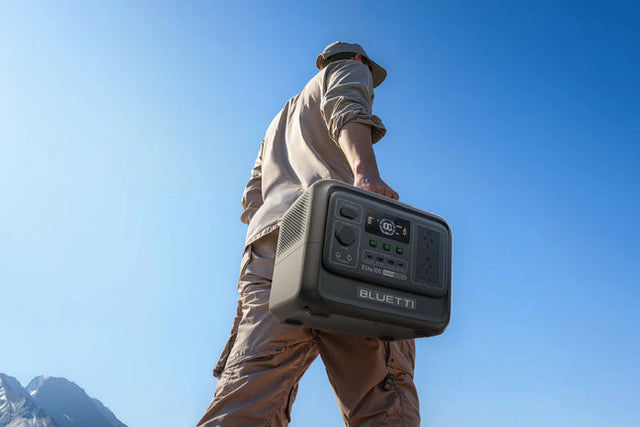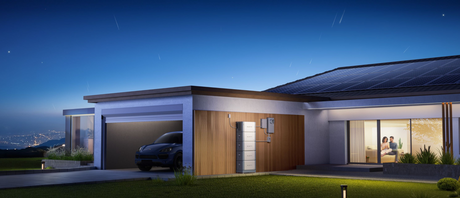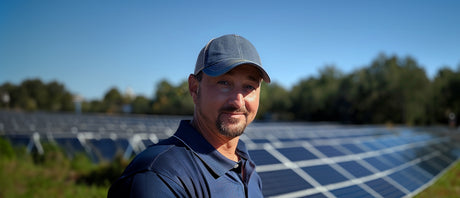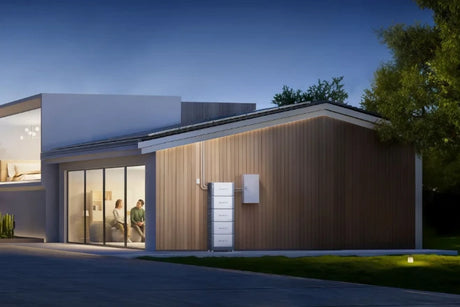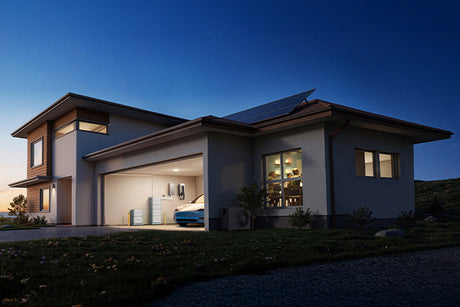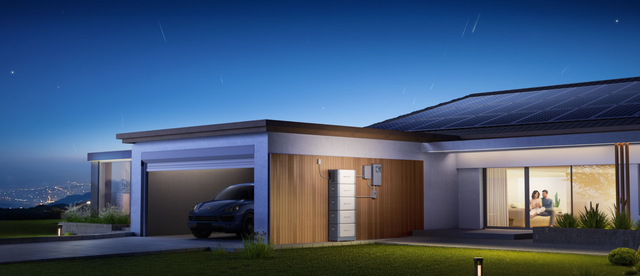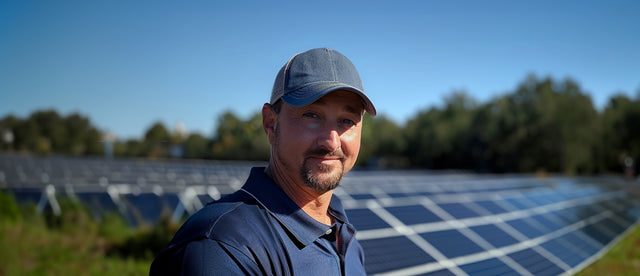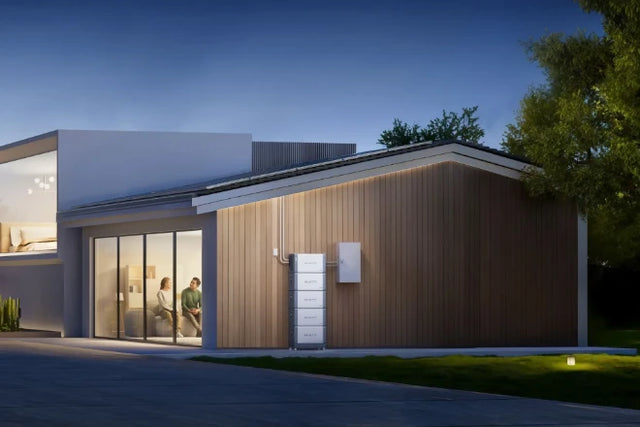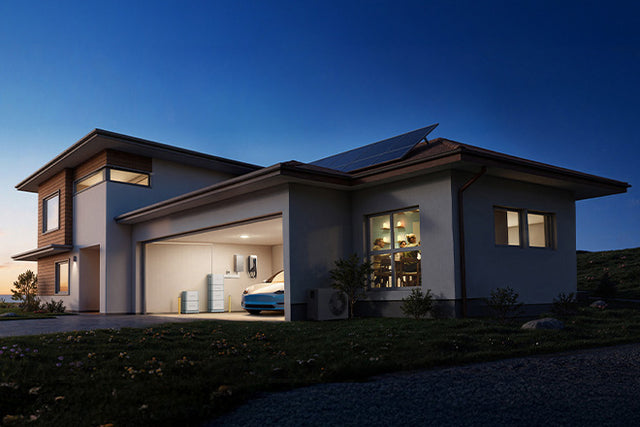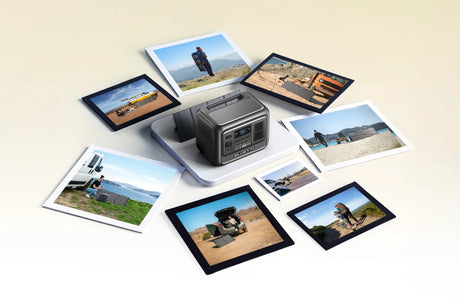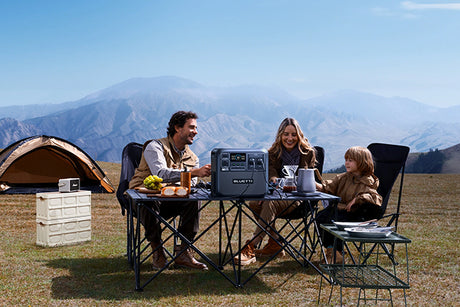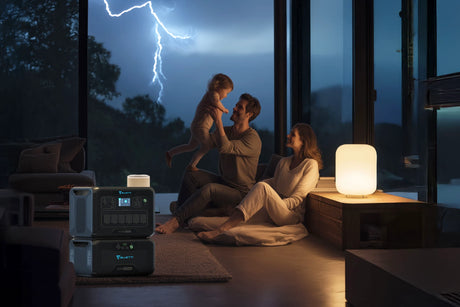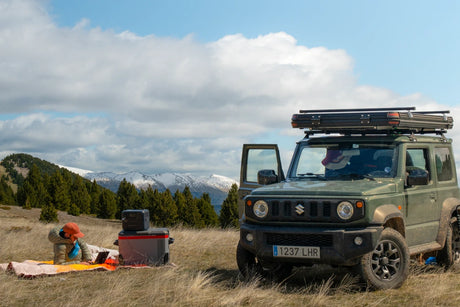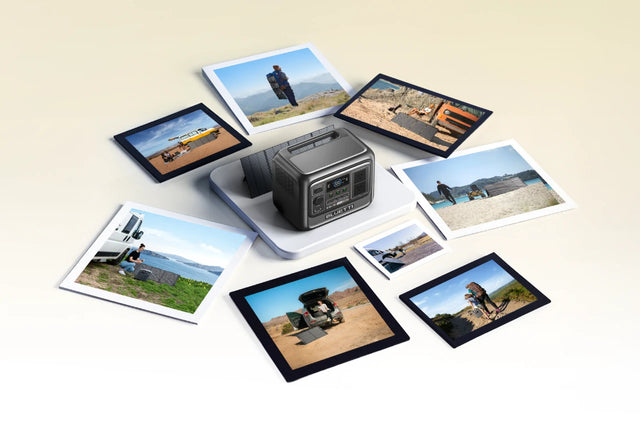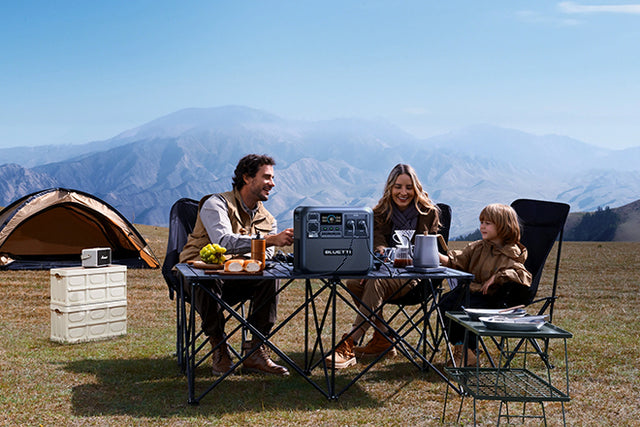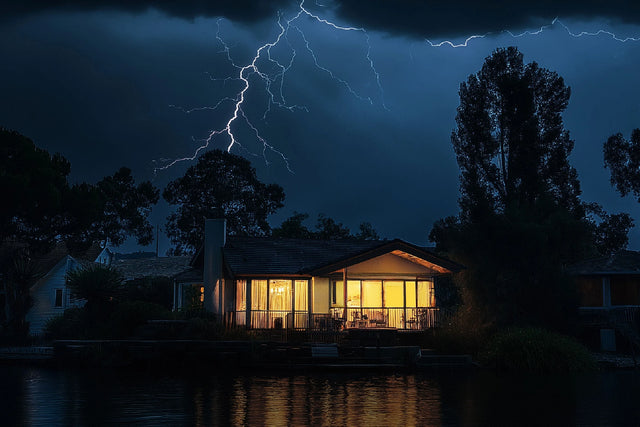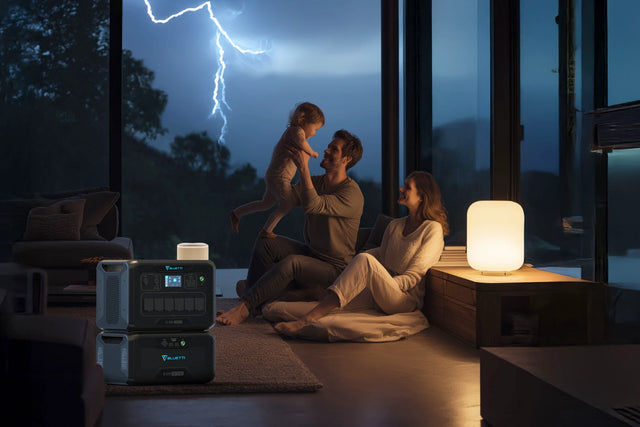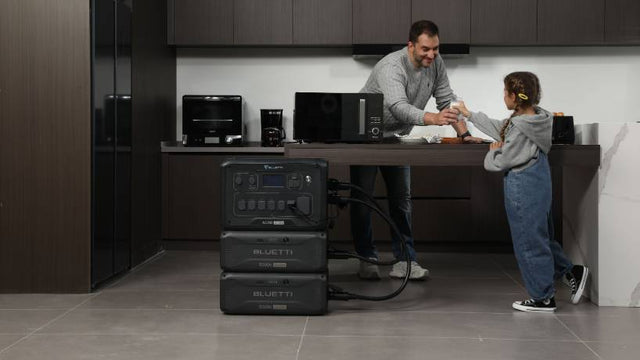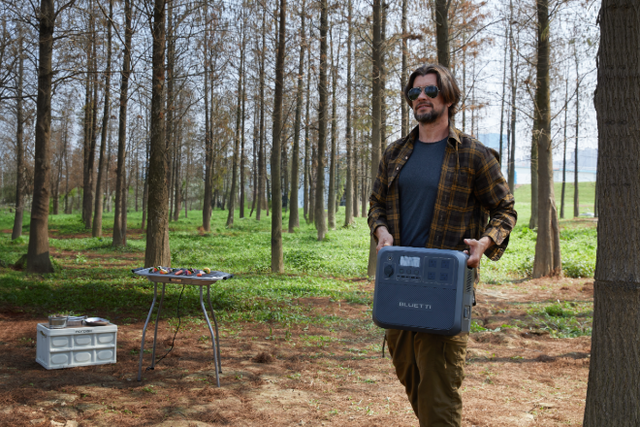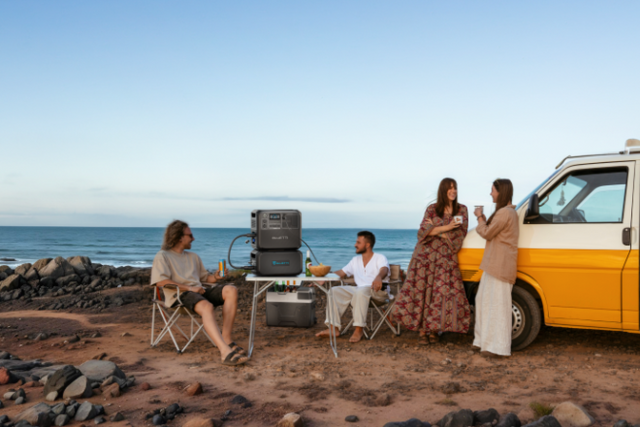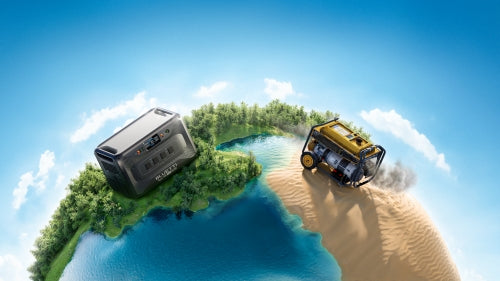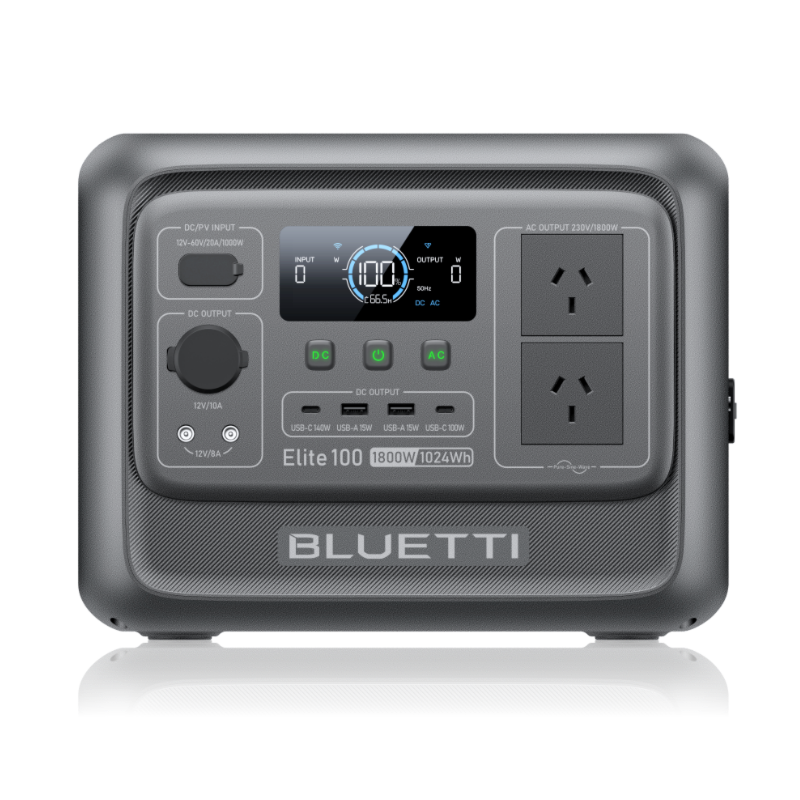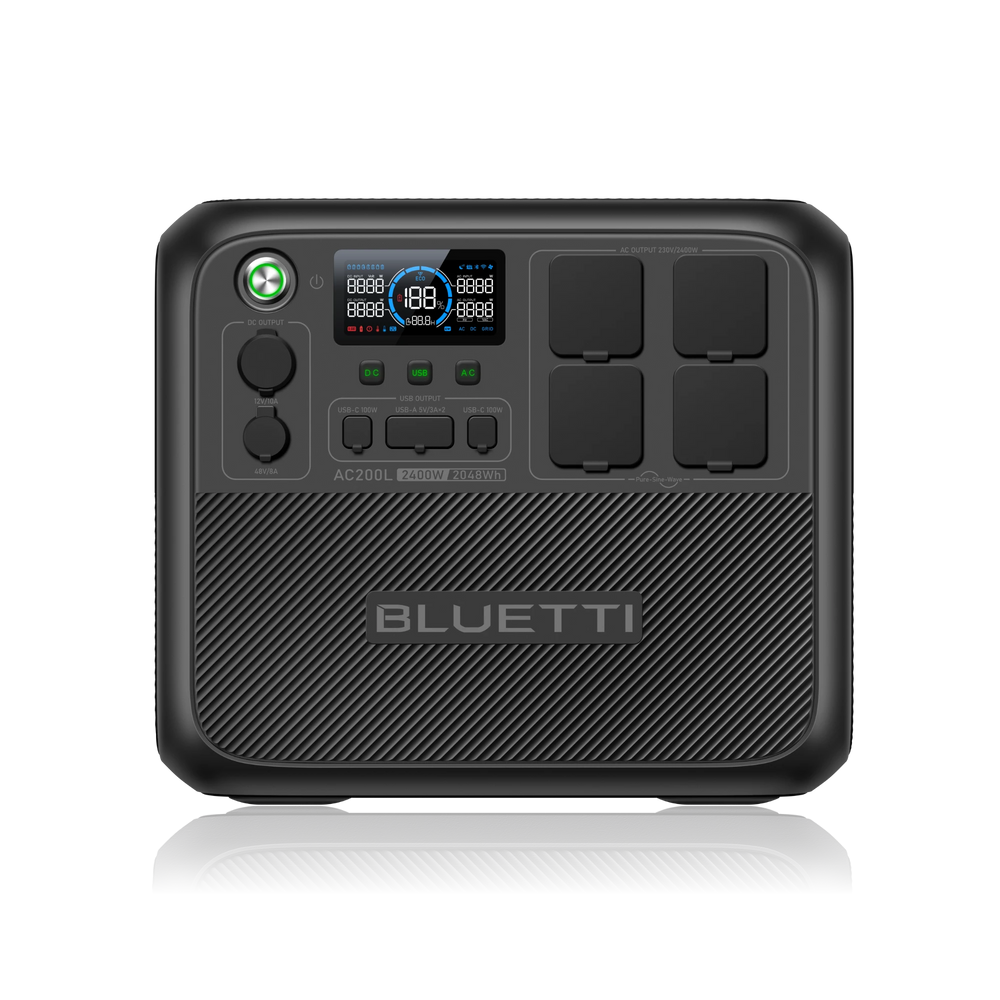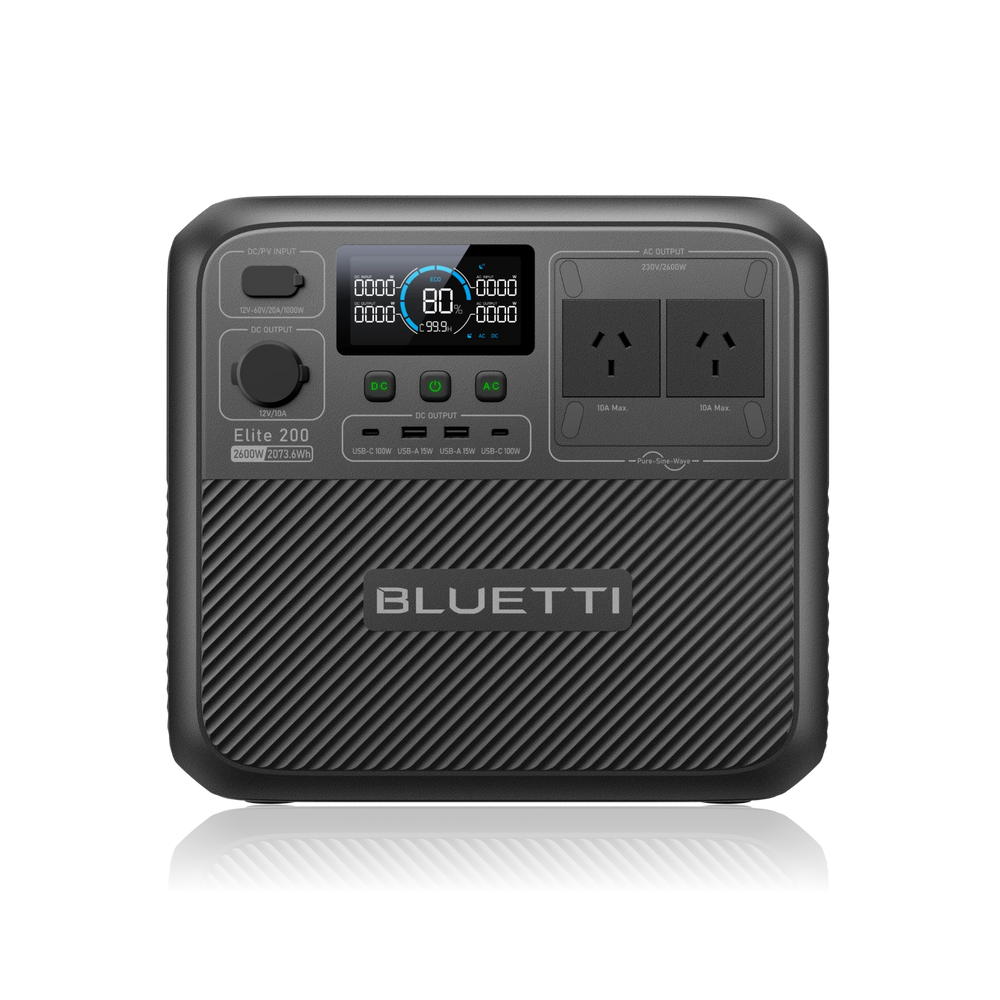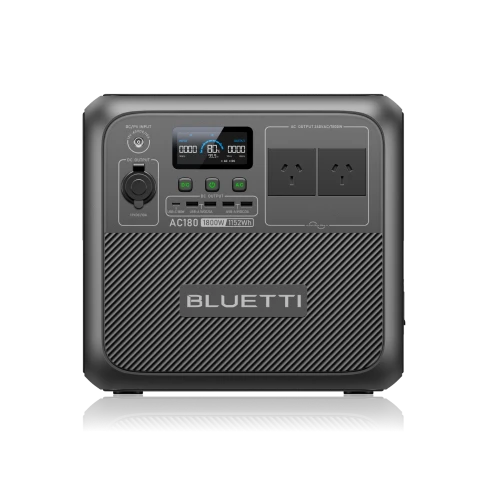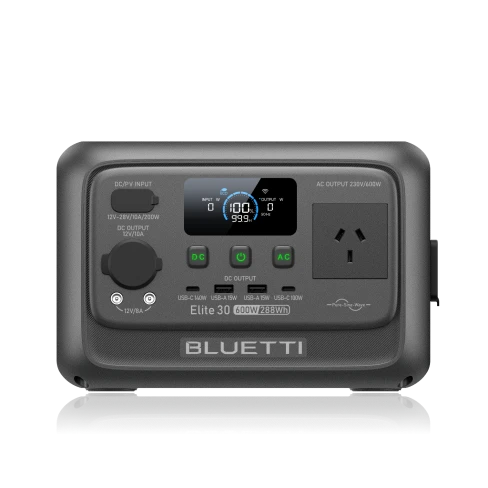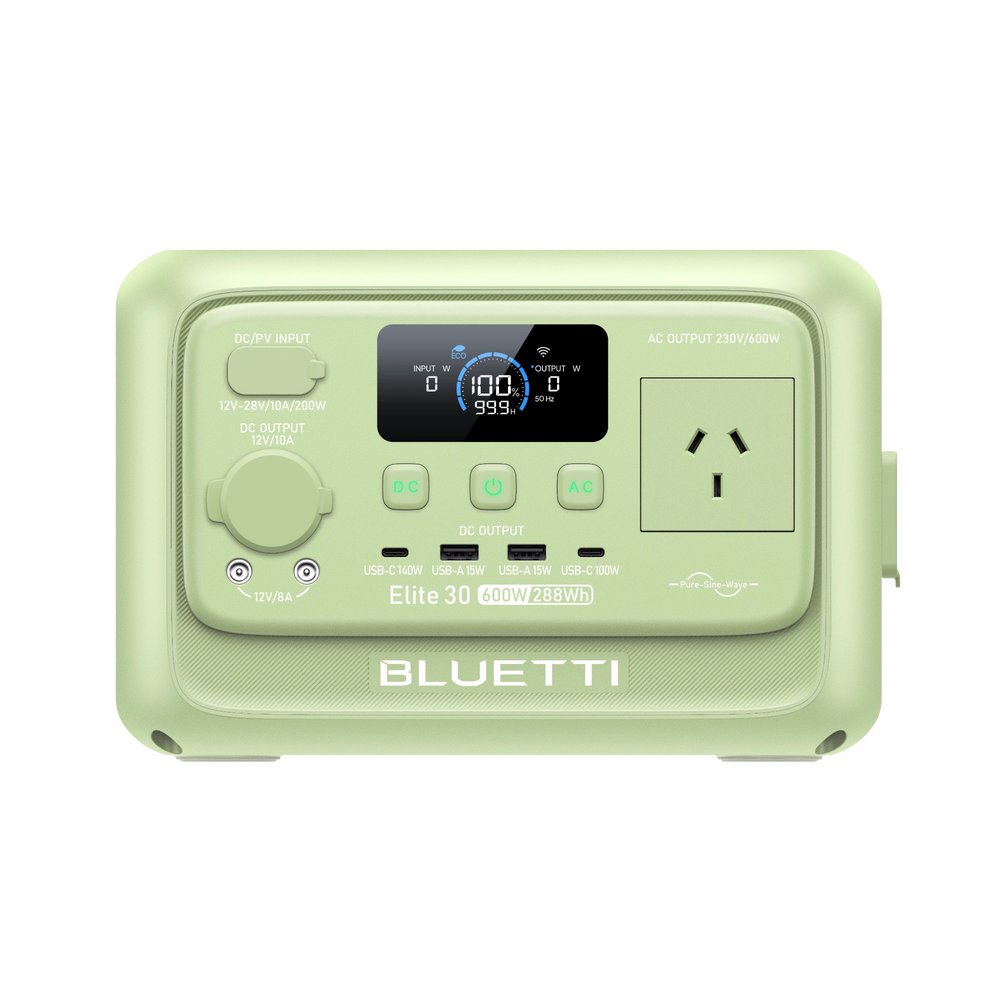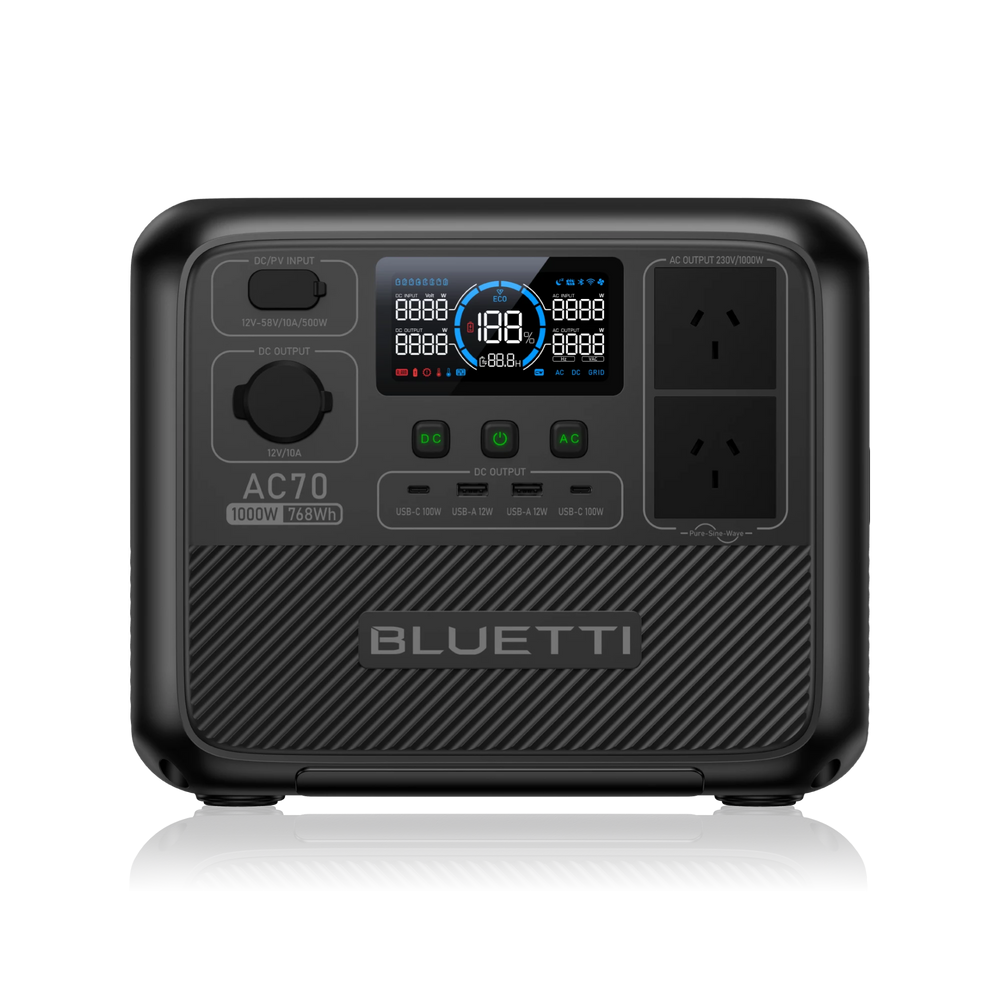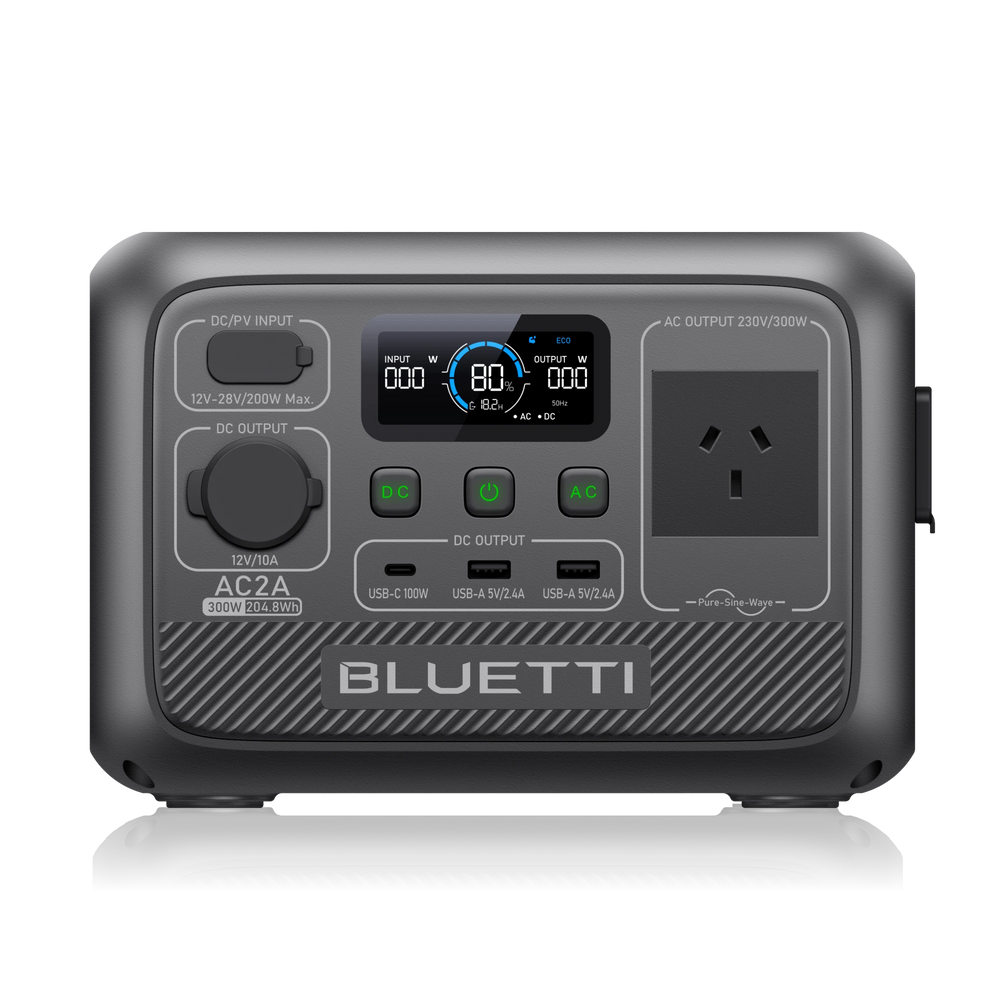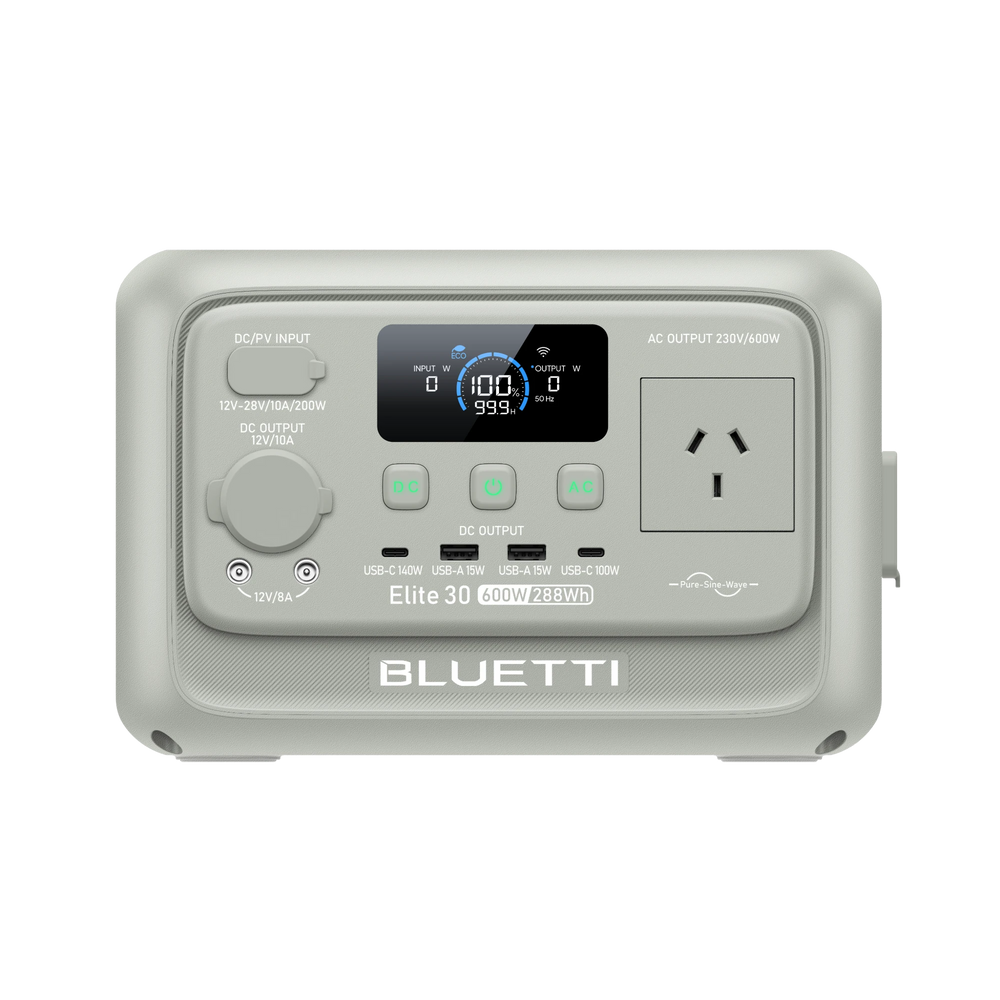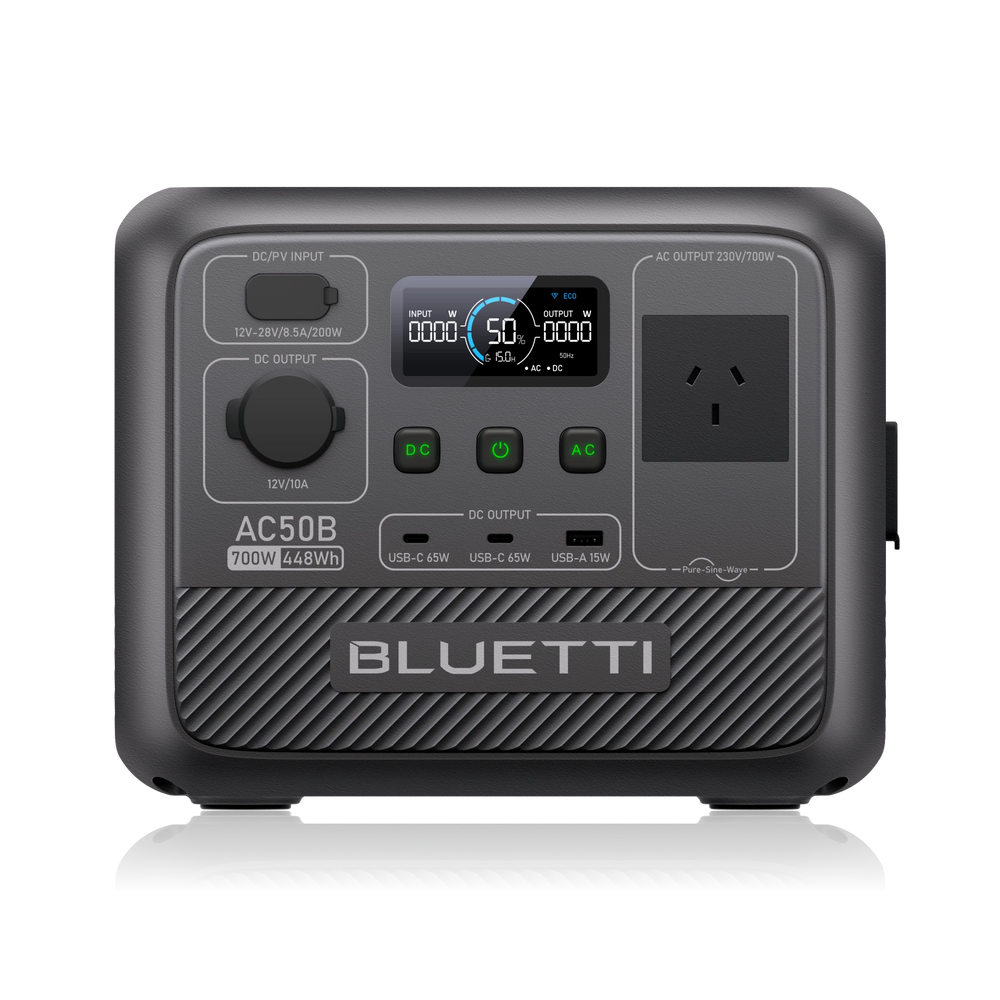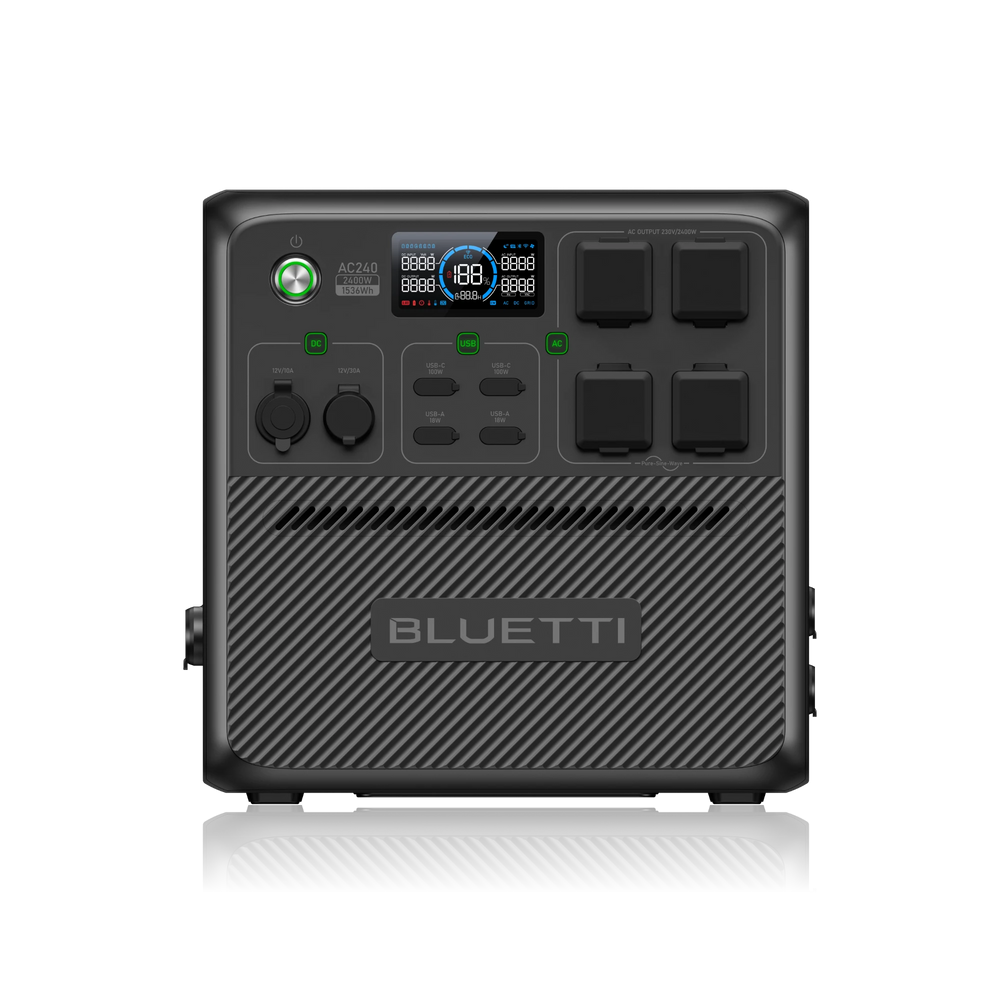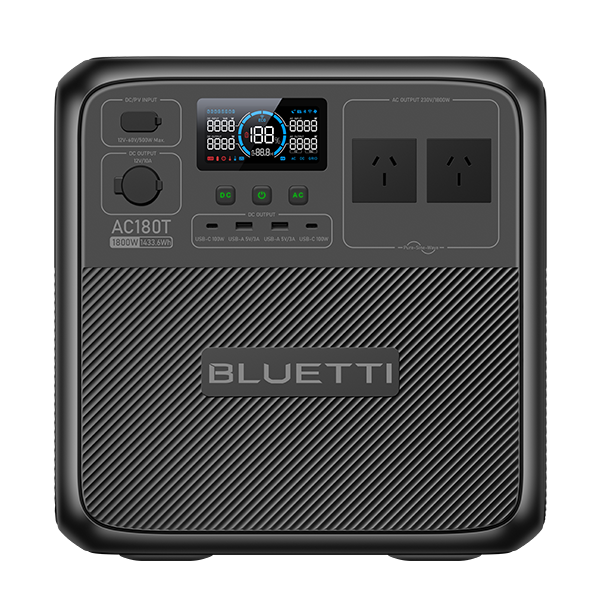Portable Power Stations
Stay powered anywhere with a portable power station — a quiet, rechargeable power solution for RVs, camping, home backup, and off-grid living.
What Is a Portable Power Station?
A PPS typically comprises three main components: a rechargeable battery pack for storage, several output ports for device connection, and an inverter. The inverter plays the crucial role of converting the stored DC (direct current) power from the battery into usable AC (alternating current) power. This reliable and efficient power source ensures comfort and connectivity for outdoor enthusiasts and off-grid users.
How to Choose the Right Size (Determining Power Needs)
Before purchasing a portable power station, determining your power consumption is the most crucial step. Calculating the power requirement helps prevent overspending or acquiring a generator with insufficient capacity.
Key Metrics for Load Management
- Battery Capacity (Watt-hours or Wh): The station's capacity refers to its energy storage capacity, typically measured in watt-hours (Wh) or ampere-hours (Ah). A higher capacity offers more energy for a longer duration. To estimate run time, divide the battery capacity (Wh) by the power drawn by the device (W). For example, a 2048Wh station can theoretically power a 100-watt device for just over 20 hours.
- Continuous and Surge Output Power (Watts or W): The output power (W) is the maximum power the station can deliver at any given moment.
- Continuous Output: Steady output required by devices; for instance, a smartphone needs about 10W, and a CPAP machine requires around 60W.
- Surge Output: Appliances such as power tools or mini-fridges (which may draw 100W or more continuously) require an extra boost or surge output when the compressor kicks in. It is important to check the surge wattage of the PPS to ensure it can handle these loads.
BLUETTI Portable Power Station Load Time
| Mode | Elite 30 V2 | AC2A | AC50B | AC70 | AC240 | AC180 | Elite 100 V2 | AC200L | Elite200V2 | Apex 300 | AC500+B300K | |
| Output Power(W) | 600 | 300 | 700 | 1,000 | 2,400 | 1,800 | 1,800 | 2,400 | 2,600 | 3,840 | 5,000 | |
| Capacity(Wh) | 288 | 204.8 | 448 | 768 | 1,536.00 | 1,152.00 | 1,024.00 | 2,048.00 | 2,073.60 | 2,764.80 | 2,764.80 | |
| Appliance | Output (W) | Run Time(Hours) | ||||||||||
| Refrigerator | 200 | 1.18 | 0.74 | 1.63 | 2.73 | 5.93 | 4.1 | 3.95 | 8.53 | 7.55 | 11.81 | 11.2 |
| Microwave | 1,000 | Can't Load | Can't Load | Can't Load | 0.58 | 1.23 | 0.87 | 0.82 | 1.79 | 1.57 | 2.13 | 2.24 |
| Electric Kettle | 1,500 | Can't Load | Can't Load | Can't Load | 0.41 | 0.82 | 0.58 | 0.55 | 1.2 | 1.05 | 1.56 | 1.49 |
| Portable AC | 800 | Can't Load | Can't Load | Can't Load | 0.72 | 1.53 | 1.08 | 1.02 | 2.23 | 1.96 | 2.78 | 2.8 |
| TV | 120 | 1.91 | 1.19 | 2.64 | 4.35 | 9.61 | 6.53 | 6.38 | 13.71 | 12.2 | 17.64 | 18.66 |
| Laptop | 60 | 3.57 | 2.18 | 4.9 | 7.83 | 17.98 | 11.75 | 11.85 | 25.13 | 22.66 | 36.97 | 37.32 |
| Electric Fan | 50 | 4.17 | 2.53 | 5.71 | 9.04 | 21.02 | 13.56 | 13.82 | 29.18 | 26.44 | 44.33 | 44.79 |
| Light Strip | 20 | 8.49 | 4.9 | 11.42 | 16.79 | 42.77 | 25.18 | 27.65 | 56.54 | 52.88 | 113.19 | 111.97 |
| Phone | 10 | 12.96 | 7.12 | 17.14 | 23.5 | 65.28 | 35.25 | 41.47 | 82.25 | 79.32 | 217.67 | 223.95 |
| Projector | 100 | 2.26 | 1.4 | 3.12 | 5.11 | 11.38 | 7.66 | 7.54 | 16.16 | 14.42 | 22.13 | 22.39 |
| Bluetooth Speaker | 30 | 6.31 | 3.73 | 8.57 | 13.06 | 31.8 | 19.58 | 20.74 | 43.08 | 39.66 | 71.55 | 74.65 |
| Car Refrigerator | 60 | 3.57 | 2.18 | 4.9 | 7.83 | 17.98 | 11.75 | 11.85 | 25.13 | 22.66 | 36.97 | 37.32 |
| Portable Induction Cooker | 1,000 | Can't Load | Can't Load | Can't Load | 0.58 | 1.23 | 0.87 | 0.82 | 1.79 | 1.57 | 2.13 | 2.24 |
| Outdoor LED Light | 20 | 8.49 | 4.9 | 11.42 | 16.79 | 42.77 | 25.18 | 27.65 | 56.54 | 52.88 | 113.19 | 111.97 |
| Small Electric Drill | 500 | 0.48 | Can't Load | 0.67 | 1.14 | 2.44 | 1.71 | 1.63 | 3.53 | 3.11 | 3.9 | 4.48 |
| Drone Charger | 100 | 2.26 | 1.4 | 3.12 | 5.11 | 11.38 | 7.66 | 7.54 | 16.16 | 14.42 | 22.13 | 22.39 |
| Portable Fan | 50 | 4.17 | 2.53 | 5.71 | 9.04 | 21.02 | 13.56 | 13.82 | 29.18 | 26.44 | 44.33 | 44.79 |
Understanding Core Technical Specifications
- Wattage (W) vs. Watt-hours (Wh): Wattage (W) determines if the station is powerful enough to run a specific appliance, while Watt-hours (Wh) measure the total energy stored, indicating how long it can power a device.
- Inverter Quality: A built-in inverter is standard in most modern units. A Pure Sine Wave inverter is vital as it converts DC power into clean, stable AC power. This stable power delivery is necessary to protect sensitive electronics, such as laptops, TVs, and CPAP machines, from damage caused by "dirty" power.
- Ports and Connectivity: For simultaneous charging, a portable power station should offer a variety of ports. These typically include AC outlets (for household appliances), USB-A and USB-C ports (for gadgets), and DC outputs (for speciality electronics).
- LiFePO₄ (Lithium Iron Phosphate) Superiority: When evaluating portable power stations, LiFePO₄ batteries are considered the gold standard. LiFePO₄ is a type of lithium battery that is widely regarded as safer, more thermally stable, and longer-lasting compared to other lithium chemistries.
- Cycle Life and Usability: LiFePO₄ batteries provide superior safety and long-term reliability. They can endure over 2,000 charge cycles while retaining high performance, often translating to a lifespan of around 10 years with average use. For instance, the BLUETTI AC200P and EB200P are rated for 3,500+ cycles to 80% of original capacity.
- Deep Cycling: Lithium batteries handle frequent deep discharges far better than lead-acid alternatives. Most lithium batteries can safely discharge up to 90% of their total capacity, whereas repeatedly discharging a lead acid battery below 50% can cause permanent damage.
- Dry Cell and Stability: Lithium batteries are considered dry cells because they use solid or gel-like electrolytes, making them spill-proof and safer for mobile and off-grid applications. They maintain a stable, flat voltage curve until nearly depleted, ensuring consistent performance for sensitive equipment.
Frequently Asked Questions
- Q1. How can I charge a BLUETTI portable power station?
-
BLUETTI power stations support multiple charging methods for flexibility at home or on the road. You can recharge via:
A standard AC wall outlet for quick, everyday charging.
A 12V DC carport, perfect while travelling or camping.
Solar panels, allowing you to recharge off-grid with clean solar energy — ideal for Australia’s sunny conditions.
- Q2: How fast do BLUETTI power stations charge?
-
Thanks to advanced LiFePO₄ battery technology, BLUETTI units can charge significantly faster than traditional battery systems. Many models support dual-input charging (AC + solar), reaching up to 100% in around one hour when connected to a 240V supply. This makes them perfect for quick top-ups before outdoor trips or during emergency prep.
- Q3: What is an MPPT controller, and why does it matter?
-
BLUETTI power stations use Maximum Power Point Tracking (MPPT) technology to optimise solar input.
It automatically adjusts voltage and current to maximise power harvest from solar panels, improving charging efficiency by up to 30%, especially under cloudy or fluctuating sunlight. This ensures reliable charging performance across Australia’s diverse climates.
- Q4: Can BLUETTI power stations supply power while charging?
-
Yes. BLUETTI models support pass-through charging, meaning they can charge the internal battery while powering devices simultaneously. This feature acts like a mini uninterruptible power supply (UPS) — ideal for running critical appliances like routers, fridges, or CPAP machines during an outage.
- Q5: What are common Australian use cases for BLUETTI power stations?
-
BLUETTI portable power stations are designed for a wide range of Australian lifestyles:
Camping and caravanning: Quiet, compact models like the Elite 30 V2, Elite 100 V2, EB70, or AC180 provide reliable power for lighting, small fridges, and cooking gear.
RV and off-grid living: Larger-capacity systems such as the Elite100V2 or AC200L deliver sustained energy for longer trips.
Home backup: High-capacity options like the Apex 300 or AC300 support fridges, routers, and medical equipment during blackouts.
Emergency preparedness: Always ready with zero emissions, safe for indoor use, and easy to store.
- Q6: Are BLUETTI power stations safe to use indoors?
-
Absolutely. BLUETTI power stations produce no fumes, smoke, or carbon monoxide, making them completely safe for indoor use. They also operate nearly silently (<60dB) — a major advantage over fuel generators in residential areas, campsites, or caravans.
